
Spanning from 1888 to 1993, the Sears catalog featured an extensive array of products, ranging from sewing machines, apparel, and sporting equipment to automobiles, residences, and even livestock.
Serving as an invaluable historical archive, the Sears catalog vividly captures the essence of our nation’s narrative by presenting the very commodities that were made available to the average individual.
However, upon retrospection, it becomes evident that a considerable portion of its pages ventured far beyond the realm of the commonplace.
The pages of the Sears catalog serve as a captivating window into eras gone by, where one could peruse not only utilitarian items but also objects that evoked fascination and curiosity.
Amidst its pages, one could find the improbable opportunity to own a piece of the automotive revolution – automobiles that beckoned a new era of personal mobility.
Yet, the astonishments did not cease there; prospective homeowners could lay claim to more than just a dwelling, as the catalog introduced the audacious concept of mail-order houses.
Furthermore, the Sears catalog’s audacious inventory extended its reach to the agricultural domain, where livestock, an embodiment of sustenance and rural livelihood, was made available for purchase.
In this article, we’ve collected some of the most memorable things the Sears catalog had to offer, a testament to the spirit of innovation and accessibility that Sears brought to generations of the past.
1. Brown’s Vegetable Cure for Female Weakness (1898)
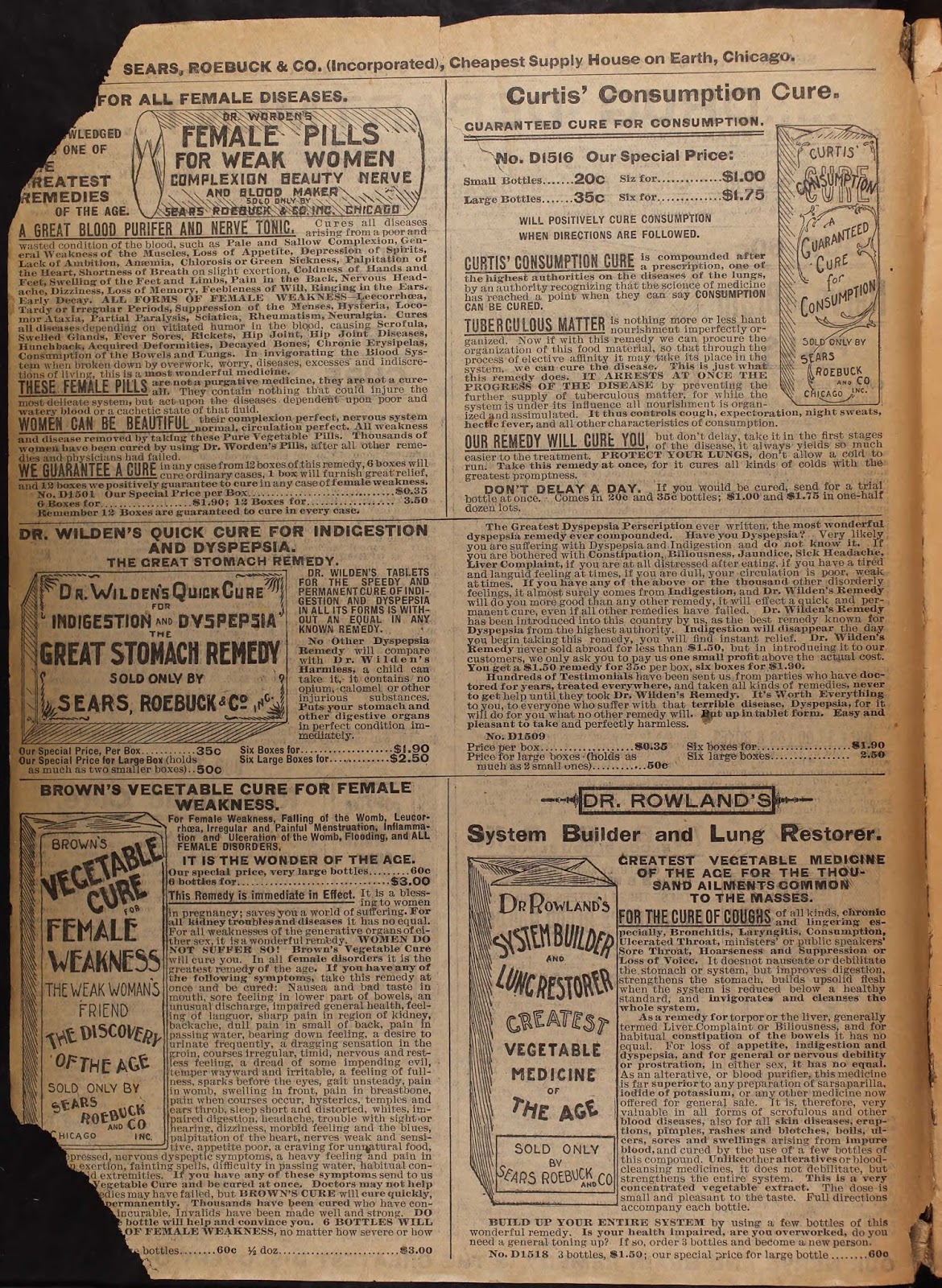
Some may have “worked,” thanks to harmful ingredients like opium and arsenic. The Spring 1898 catalog shown here offers a sampling of remedies that may make you shudder — either with fear or laughter.
Brown’s Vegetable Cure for Female Weakness claims to rid women of everything from ordinary menstrual cramps and back pain to bizarre symptoms such as “a dread of some impending evil” and “sparks before the eyes.”
Curtis’ Consumption Cure guaranteed it could eradicate tuberculosis, a promise it almost certainly couldn’t keep.
2. The Heidelberg Electric Belt (1902)
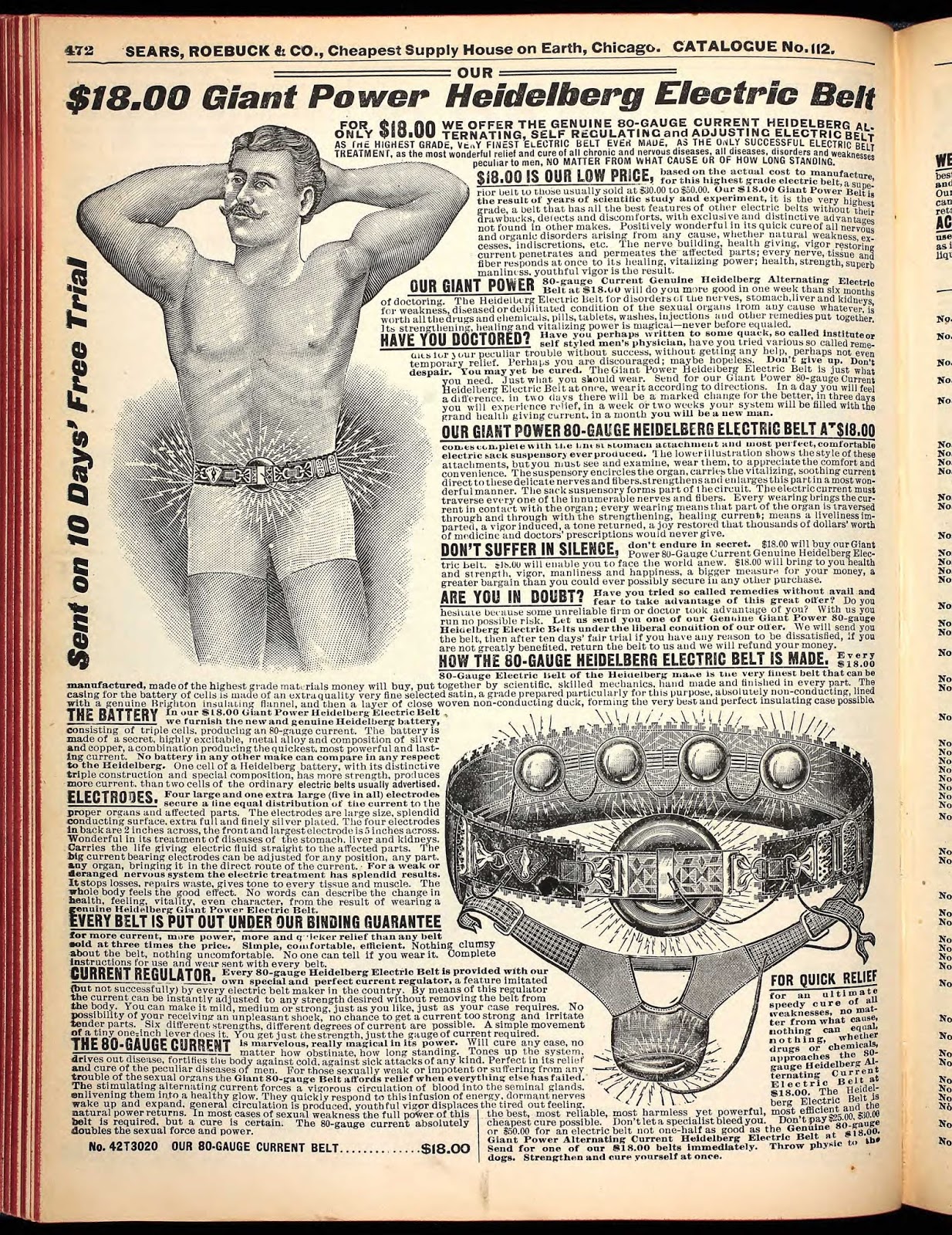
This page from the Fall 1902 catalog advertises the Heidelberg Electric Belt, which sent electrical currents through men’s groin areas to cure a “weak or deranged nervous system” and double “sexual force and power.”
3. Ladies’ Plush Capes (1900)

Historians and costumers use the Sears catalog to find out what the average person during an era would wear.
The Fall 1900 catalog paints a lovely picture of early-20th-century women strolling through town in plush capes trimmed with bear fur and beads.
4. Maternity Outfit (1911)

Rubber sheets, a breast binder, olive oil, and antiseptic soap are just a few of the items included, along with a reminder that they are not a replacement for a doctor.
5. The Sears Motor Buggy (1909)
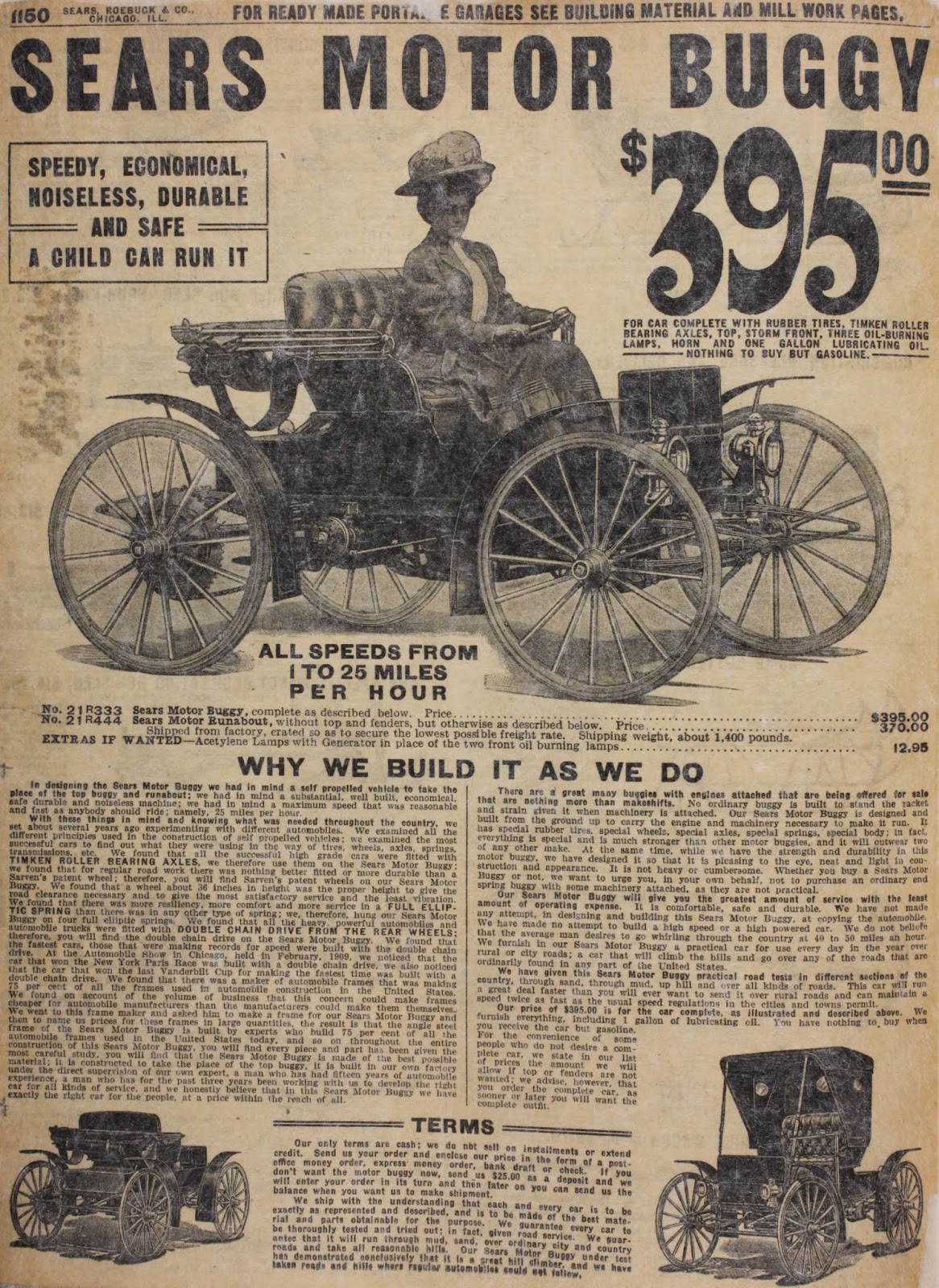
In this Fall 1909 ad, the Sears Motor Buggy boasts speeds of up to 25 miles per hour and operation so simple even a child could do it. The price was $395, or just over $14,000 in today’s dollars.
6. The Sears Home Kits (1932)

Many of these homes are still standing today. This Fall 1932 ad shows a few of the models available for about $1,700, which would be roughly $35,000 today.
7. Spring Chickens (1947)
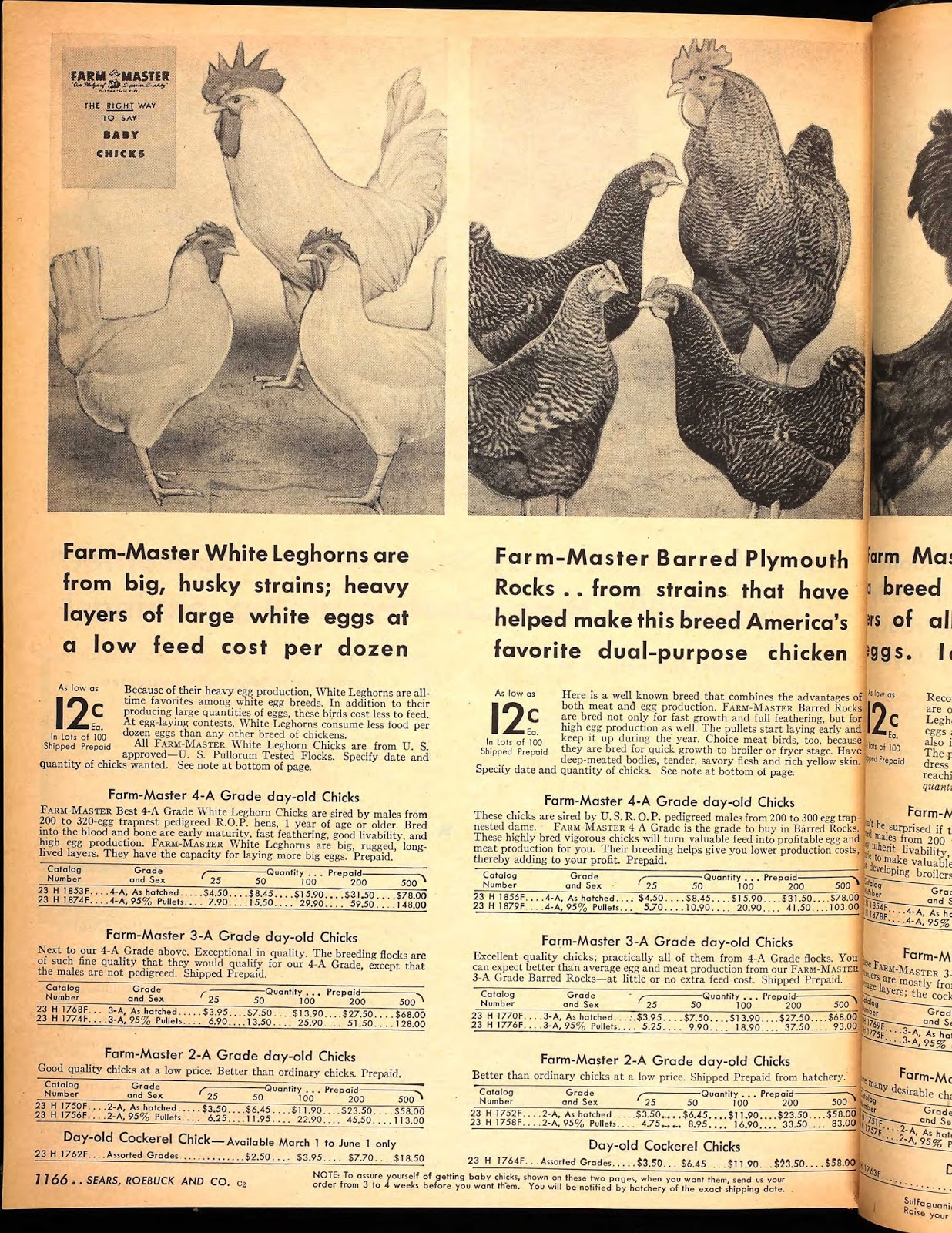
The 1947 Spring catalog had baby chicks ready to order.
8. Fall Rifles (1950)
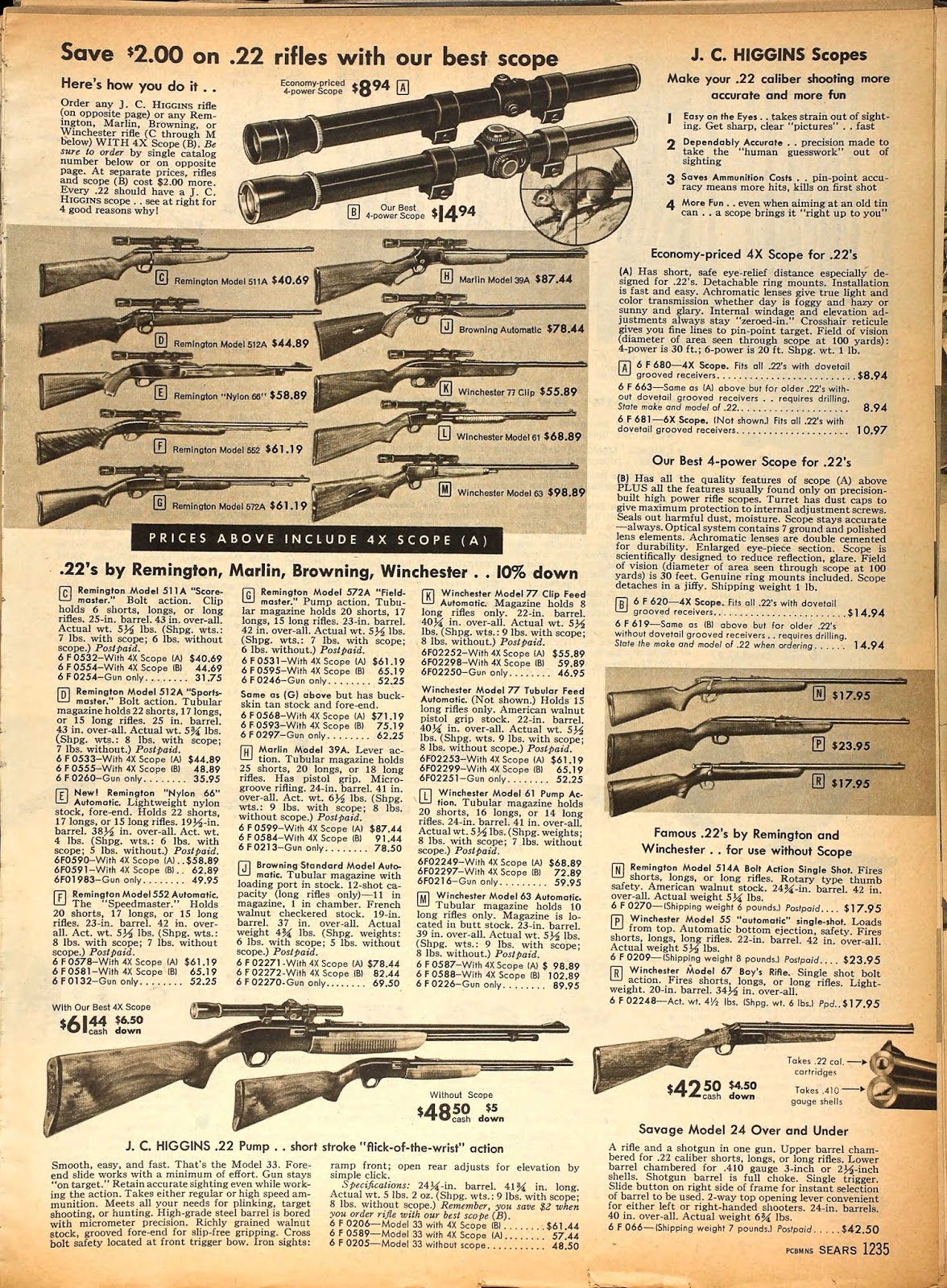
Though guns-by-mail sounds like a thing of the distant past, the catalog sold them well into the 1970s.
9. Plaid Pants (1973)

But this outfit from the Fall 1973 catalog is particularly eye-catching, with its contrasting colors and patterns, ruffles, and wide-leg pants in a plaid that many of us might recognize from an old rec room sofa.
10. Video Cassette Player/ Recorders (1981)

In today’s dollars, that would be over $3,100.
11. Small Lightweight Cellular Phones (1991)
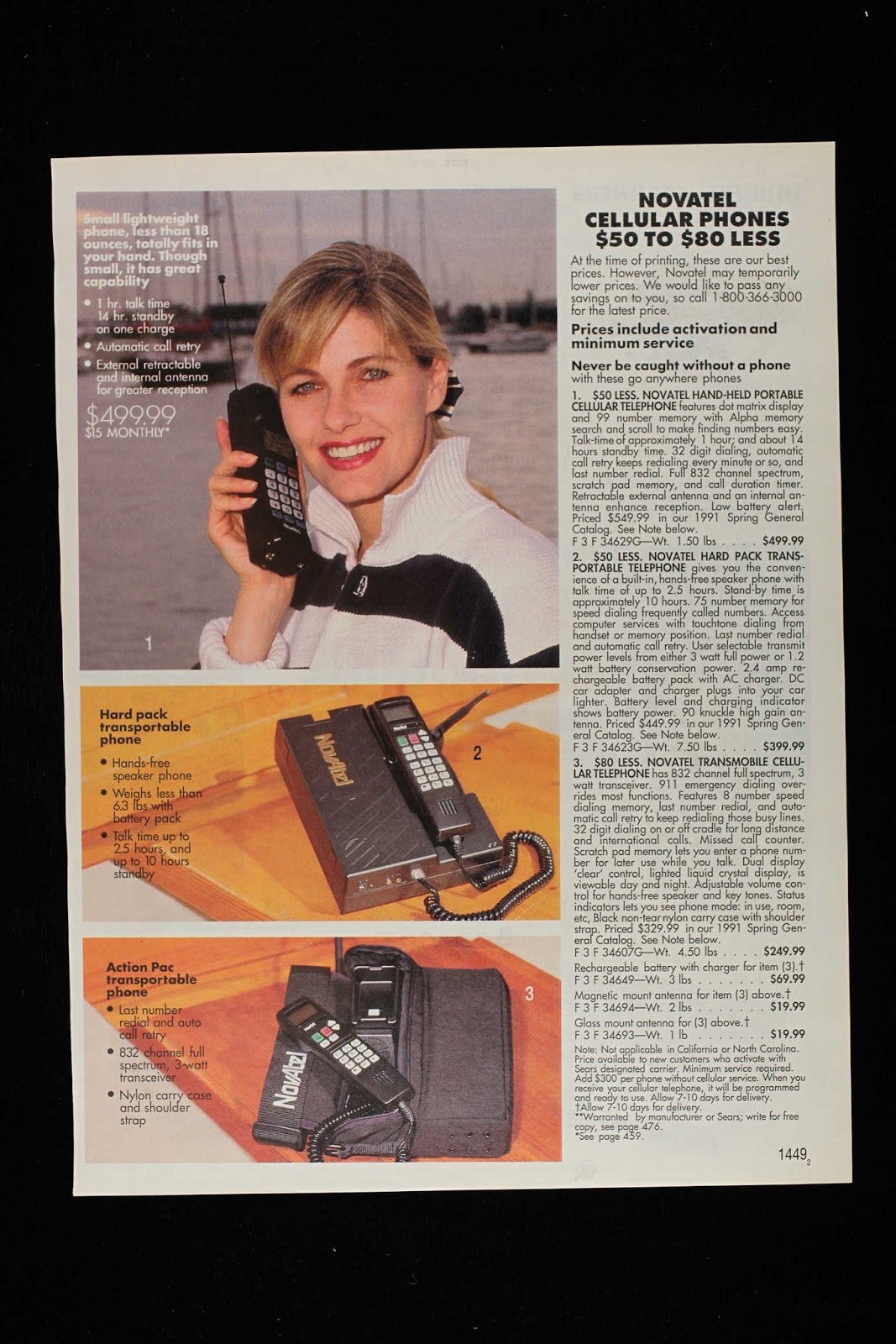
Cell phones used to be bigger and more expensive, too. This “small, lightweight” cell phone from the Fall 1991 catalog weighs almost two pounds.
Add in the battery, and it goes up to nearly eight pounds. It cost more than $900, or $1,500 after inflation.
Then again, if the catalog were still being published today, people 20 years from now would surely balk at the price and features of an iPhone.
(Photo credit: Wikimedia Commons / Pinterest / Sears Catalogs / Commentary by Ancestry).